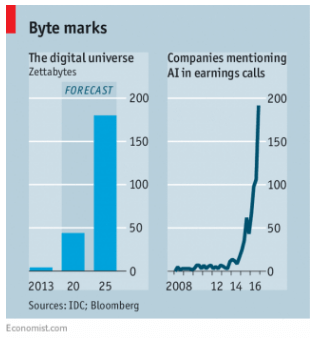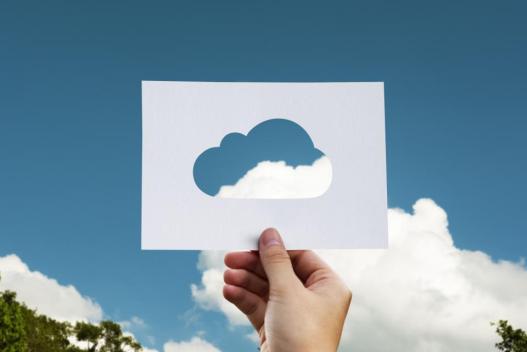It seems more objects than not are connected to the internet in some way or another. Whether it’s traditional technology such as computers, laptops, tablets and smartphones, or the less expected items such as household appliances, toys, cars, and drones; with an internet connection comes the opportunity to save information to what is commonly referred to as ‘the cloud’. But with so many internet-connected-things, surely the cloud is going to run out of space at some point, right?
Just how much information can we store before the entire cloud eco system collapses? Or we need to look for a storage alternative? Should we be worried? Will the cloud eventually be as useful to us as the 1.44Mb floppy disk that used to fulfill all our storage needs at one point? There are other things that should concern us too, such as the costs and extensive use of energy required to power such storage facilities. Are we wasting resources on storing information that doesn’t need to be stored?
It is certainly true that the worldwide demand for data is increasing at an alarming rate. In fact the demand is growing so quickly that it is challenging for even the world’s leading storage providers, Amazon AWS and Microsoft Azure, to keep up. These storage companies are adding more server capacity daily than their entire capacity for 2006. But Amazon don’t appear to be too concerned with any of the above questions just yet, reporting earnings of $1.6billion USD in the first quarter of 2015.

Can this level of storage be sustained?
In 2009 analysts estimated that humanity was generating 15 petabytes every day. Just 3 years ago Facebook alone was generating 4 petabytes a day. If you’ve never heard of a petabyte, it is approximately 1,000 terabytes. A terabyte is approximately a trillion bytes. If that isn’t mind-boggling enough, Amazon’s AWS has been reporting a 43% year-over-year growth, and the overall cloud computing industry has been projected to grow at a compound rate of 19% annually up until the year 2020. This amount of data seems unfathomable let alone sustainable.
Others are also starting to question the future of cloud storage and its abilities to meet our never-ending appetite for data-storage. Some alternative options currently being explored include Flash/SSD, nanomagnets, magnetic tape drives, single molecules and even DNA. All these concepts offer completely new ways of storing data indicating possible alternatives to popular cloud storage. Although seemingly far-fetched at this point, these new ideas appear somewhat viable, opening up the possibility of developing a new technology that can sufficiently meet all our future data-storing demands. The bigger question is when will they be viable?
But are we wasting resources and money on out-of-date useless data?
With cloud alternative concepts still a long way from fruition, should we be concerned on rationing the storage space we have and preserving our expensive resources? It is clear that the world has unimaginable amounts of data, but we don’t imagine all that data really needs to be stored, does it? Well, that might depend on how the data is intended to be used.
For some companies such as Google and Facebook, data is their core product. Initially using data to sell targeted advertising, more recently both Facebook and Google have been using stored data to develop a number of artificial-intelligence (AI) or “cognitive” services, including translation, visual recognition, and personality assessment. All of which will generate new sources of revenue for them.
Although today’s value of data is higher than ever, not all companies need to store as much data as Google, Facebook or Amazon. In fact, storing more data than required could be costing your business. Not only is data charged on space as well as the cost of running the storage equipment (electricity, equipment, and other overheads), but it could be slowing down your entire IT environment.
For those firms that aren’t using data as or in support of a core product, it is important to monitor storage and performance to ensure costs and efficiency are at their best. This means keeping data ‘clean’ and only storing necessary data, which will make the most of your IT equipment and keep storage costs to a minimum. This can be managed either internally, or it can be assigned to your cloud storage provider (if they offer this service).

Should we be worried?
Will the cloud’s eco system ever collapse? Essentially no. While we await to see if in fact DNA is a feasible storage holder for digital data, for the moment we can remain calm about the possible limits of data storage. If every company monitors their own storage use and performance, we should only be using what we need, saving on cloud resources and expenditure.



